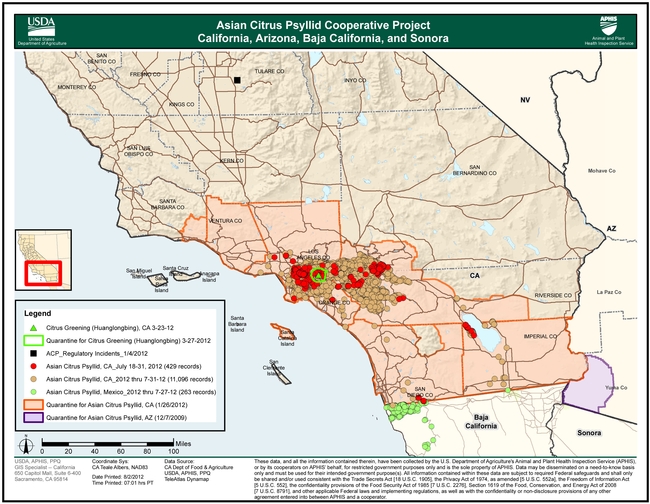The spread of the Asian citrus psyllid in southern California continues eastward. The number of find sites is so large in the residential areas of Los Angeles, Riverside and San Bernardino counties, that the CDFA residental site treatment program has shifted to treating only around commercial citrus orchards to help protect them. In areas where the psyllid population densities are much lower, such as Imperial, San Diego and Ventura counties, all find sites are being treated and the commercial citrus treatment program is still in phase I (for a description of phases see http://ucanr.org/sites/KACCitrusEntomology/Home/Asian_Citrus_Psyllid/Management_420/). Growers in these areas treat with two broad spectrum insecticides and do not detect psyllids for many months if not years. In areas such as San Bernardino, where psyllids have become well-established in the residental areas, the commercial citrus treatment program is now in phase III. Growers in these areas must treat more frequently to keep psyllids below detectible levels. The purpose of treatments is to suppress the psyllids so low that they can not find or spread huanglongbing disease and to prevent the psyllid from spreading to new areas. Huanglongbing was found in one tree in Hacienda Heights and that tree was removed. But it is likely there are additional infected trees in southern California.
Attached Images:
